#the legendary jabbar
Explore tagged Tumblr posts
Text
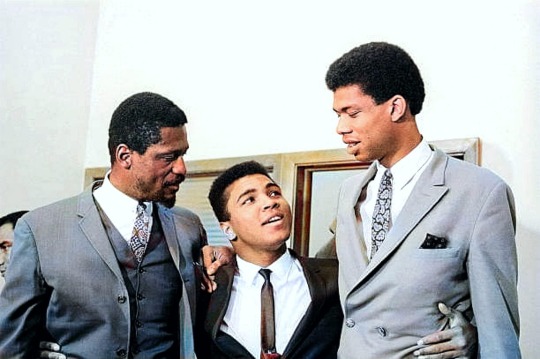
3 legendary figures in 1 frame.
Muhammad Ali Dwarfed by basketball players on the left Bill Russell 6ft 11inch player coach of the Boston Celtics and 7ft 3inch college star Kareem Abdul Jabbar (Lew Alcindor).
Ali then known by his birth name Cassius Clay strains his neck as he talks to them.
#bill russell#muhammad ali#kareem abdul jabbar#blacktumblr#black history#black liberation#african history
148 notes
·
View notes
Text
LeBron James turns 40: Ranking the top 40 highlights from the King's legendary career on his birthday.
LeBron James has been a dominant force in basketball for over two decades, amassing a legion of awards, trophies, medals, and records. We try to narrow his incredible resume down to a top 40.
LeBron James isn’t just a basketball player—he’s a living legend. For two decades, he’s redefined the game, shattered records, and silenced doubters while cementing his place as one of the greatest athletes of all time.
As he turns 40, we celebrate the King’s unparalleled legacy by revisiting the 40 moments, records, and stats defining his incredible journey. From winning Olympic gold at Paris 2024 to setting the all-time NBA minutes record, here’s how "LeBron James" became a name synonymous with greatness.

A stunning NBA debut & Oldest player to average 30 points per game in a season.
James' was the most hyped NBA prospect coming out of high school in history, so it only makes sense that his professional debut would be equally seismic for the NBA and indeed the sport itself. Thankfully an 18 year old James gave a taste of what was to come, stuffing the stat sheet with 25 points (on 12-of-20 shooting), 9 assists, 6 rebounds and 4 steals in a 106-92 loss to the Sacramento Kings on 30 October 2003.
James is the oldest player to average 30 points per game in an NBA season, doing so at age 37 in the 2021-22 campaign. James averaged 30.3 PPG in 59 games.
James' skill on the court is so elite that he could seemingly play any position, but 'officialy' playing as a forward has seen him rack up 11,261 Assists - The Most in League history by a clear margin.
With 119 (regular season) triple-doubles and counting, James holds the record for the most by a forward in NBA history.
I would Choose the Los Angeles Lakers for my future Basketball's Team.

The Lakers have a Rich History and Tradition
The Los Angeles Lakers are one of the most storied franchises in NBA history. Founded in 1947, the team has a legacy that includes 17 NBA championships, tied for the most in league history with the Boston Celtics. This rich tradition of success is built on the shoulders of legends like Magic Johnson, Kareem Abdul-Jabbar, Shaquille O'Neal, and Kobe Bryant. Being part of such a prestigious organization means joining a lineage of greatness and contributing to a legacy that resonates with fans around the world.
Current Star Power
With superstars like LeBron James and Anthony Davis, the Lakers are consistently competitive. LeBron, often regarded as one of the greatest players of all time, brings unmatched experience, leadership, and basketball IQ to the team. His ability to perform in clutch situations and elevate his teammates makes him an invaluable asset. Anthony Davis complements LeBron perfectly with his defensive prowess and scoring ability, creating a dynamic duo that can challenge any opponent.
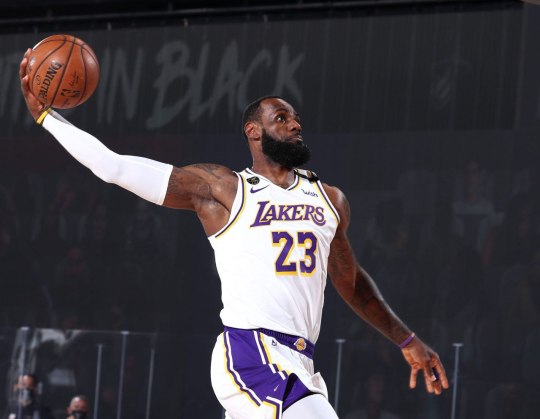
Championship Aspirations
The Lakers are always in pursuit of championships. The organization has a winning culture that emphasizes excellence and competitiveness. As a player, being part of a team with such high aspirations can be incredibly motivating. The Lakers' front office is committed to building a championship-caliber roster, which means that players have the opportunity to compete for titles every season.
3 notes
·
View notes
Text
Kobe Bryant: Best Player of the Last Thirty Years (At Least)

It is the shortness of memory, as well as a certain hubris of each age, that leads us to assume that the best player of the last three or so generations must be the G(reatest) O(f) A(ll) T(ime). To settle that discussion, many players prior to Michael Jordan must be considered.
However, if we confine ourselves to the three players from comparatively recent memory, each dominating an era, though in different ways, namely Michael Jordan, Kobe Bryant and LeBron James, the choice is clear: Kobe Bryant.
As for LeBron James, he has sought out winners more so than making them, yet has fewer championship rings than Jordan or Bryant. As such, only if LeBron finds leadership qualities in himself, along the lines of an aging Kareem Abdul-Jabbar, let us say, to get another ring or two as his team's elder statesman, is he even in the discussion.


If, then, we are looking more or less at the post-Dream Team era, this leaves two and only two as potentially the greatest: Michael Jordan and Kobe Bryant.
Before we look at Kobe Bryant's career, and the common objections to his GOAT resume, let us first look into the era of Michael Jordan, and the reasons that he is synonymous with his sport, even beyond his accomplishments.
In the 1980's, the controversial but undeniably business-savvy David Stern wanted to increase the profitability of the NBA, which had struggled badly as a business in the seventies. It also must be noted that the ABA, though it folded, had changed public perception of isolation play and recognition of individuals, such as Julius Erving, in a team sport: Prior to the ABA's streetball style, it was considered in poor taste for an individual, such as George Mikan, Bill Russell, Wilt Chamberlain or Kareem Abdul-Jabbar, to dominate a team sport like basketball, so much so that all four men had rules changed to lessen their dominance, either at the NCAA level, in the pros, or both.
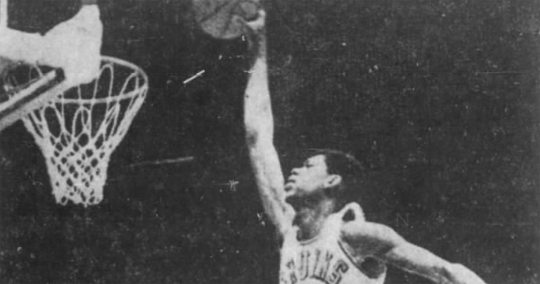
By Michael Jordan's era, however, the precedent of Julius Erving, a high-flying isolation specialist, had changed public perception of one-on-one play in basketball, and what is more, the social upheaval of the sixties and seventies, followed by the neo-capitalism of the eighties, had changed the culture from "we" to "me".
Thus, David Stern, and Nike with him, saw in Michael Jordan's storms of scoring, unprecedented for a guard, an opportunity to sell name brands through a single person, unthinkable just fifteen or so years prior.
This had two substantial results: (1) No matter how many shots Michael Jordan, the all-time leader in usage percentage, took, it would offend sponsors to call into question whether or not he should pass more, (2) The flagrant foul rule seemed conveniently timed to prevent, let us say, the New York Knicks of that era, and other teams planning to replicate Detroit's notorious "Jordan Rules", from grounding Air Jordan.
We can also point to the 1990's as the decade in which palming the ball became generally acceptable for crossovers, in which pushing off the defender in plain sight became commonplace, and in which traveling calls became a bit more lenient, all of which made Jordan's explosive offense that much more potent.
Prior to this, the Detroit Pistons had been highly successful in limiting Michael Jordan's team accomplishments:
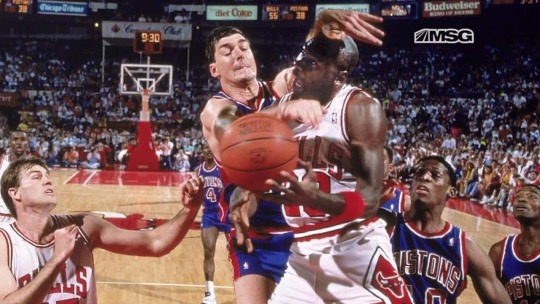
That brings me directly to the first piece of evidence in favor of Kobe Bryant, even over Michael Jordan. Jordan did no weight training until after being manhandled by the Pistons, whereas Kobe Bryant, knowing that coming directly from high school would require beefing up, was legendary for his weight training from the very start, resulting in him having, perhaps, an extra fifteen pounds of muscle over Jordan. In other words, "Kobe Rules" would not have worked.
Then there is the fact that Kobe Bryant's clutch threes compilation rivals that of, for instance, Reggie Miller, a statement that cannot be made of Jordan.
However, there are, on the face of it, certain reasons Jordan might seem clearly superior to Kobe Bryant, starting with raw statistics. How do we account for Jordan having more points per game, and even a fraction more of an assist per game? The answer: The eras in which they played.
Look at the peak years of Jordan and Kobe as scorers, namely Jordan's 1986-87 season and Kobe's 2005-06 season. In '87, the NBA averaged 109.9 points per game, while in '06, it averaged just 97 points per game. This alone negates any case that Jordan was a more innately prolific or efficient (for his era) scorer than Kobe.
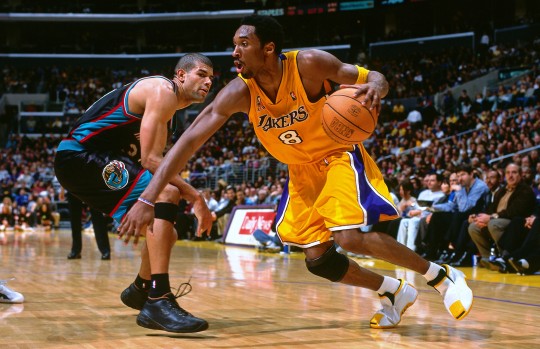
The next objection, however, is raised more often, and was likely the one that Kobe Bryant hated the most: The idea that his first three NBA championships were overwhelmingly attributable to the presence of Shaquille O'Neal.
The problems with this idea are many, starting with Shaq's injuries and lack of conditioning, resulting in at least two of those rings being with Kobe as the hero, Shaq as the sidekick, but the greatest problem with this hypothesis runs even deeper.
What, other than an iron work ethic, did Kobe Bryant have that Shaquille O'Neal, by the time of the Lakers '00-'02 three-peat, utterly lacked? In a word, it was speed, and an offense that waited for Shaq to lumber into the low post not only limited Kobe's individual statistics, but likely cost the team rings in the long term.
The fact that the Lakers fell apart about the time Shaq left is attributable to a myriad of factors, such as feuding in the front office, the absurd notion of acquiring overpriced, over-the-hill talent such as Karl Malone, and the morale-breaker of Phil Jackson deciding to sell a book at his team's expense, trashing his best players.

Then, there was fall of the Lakers, yet again, after their 2010 championship, but before we get to that, let us consider just how little help Kobe Bryant really had in getting his post-Shaq rings.
His best teammate, in 2009, by far, was Pau Gasol. Pau Gasol would most likely not be in the Hall of Fame but for the lucky break of playing alongside Kobe Bryant, and no sane person would compare him, as a sidekick, to Scottie Pippen. A case could be made, therefore, that Kobe Bryant had less help in 2009 than Michael Jordan did in the late 1980's, and while Kobe won a ring, Jordan got sent home three years in a row by Detroit.
What about the post-2010 Lakers collapse? The causes were typical of how the Lakers organization self-destructs: Phil Jackson blaming Kobe Bryant, once again unfairly, and the Lakers seeking washed up players, such as Steve Nash, forcing Kobe Bryant to work through injuries as, yet again, a one-man show on what was supposed to be a team.

Why, then, is Kobe Bryant treated so unfairly by the press, even to this day? When Michael Jordan took the most shots, this was seen as leadership, but when Kobe did it, the press called him selfish. Jordan's brusque demeanor was generally seen as a sign of a great competitor, while Kobe was accused of just being a mean and nasty guy.
The reason is simple, and it is not Michael Jordan's fault: Money. Michael Jordan lucked into saturating the sports sponsorship market, leaving little room for Kobe. The press, not fearful of offending sponsors with Kobe as with Jordan, did what it usually does: Try to tear down the best and brightest, because such negative faux-journalism, sadly, sells.
If the shoes were Air Kobe's, and Kobe Bryant had starred in something like Space Jam, we would all rightly see Kobe Bryant as synonymous with modern basketball, before and after his untimely departure. As for LeBron James, he kissed up to the media long enough to win them over, which was not a priority of Kobe Bryant, and is unrelated to basketball achievements.


#Kobe Bryant#Michael Jordan#LeBron James#Kareem Abdul-Jabbar#Los Angeles Lakers#UCLA#basketball#NBA#NCAA#sports#Phil Jackson#Jordan Rules#GOAT#Detroit Pistons#Bill Laimbeer#RIP
3 notes
·
View notes
Text
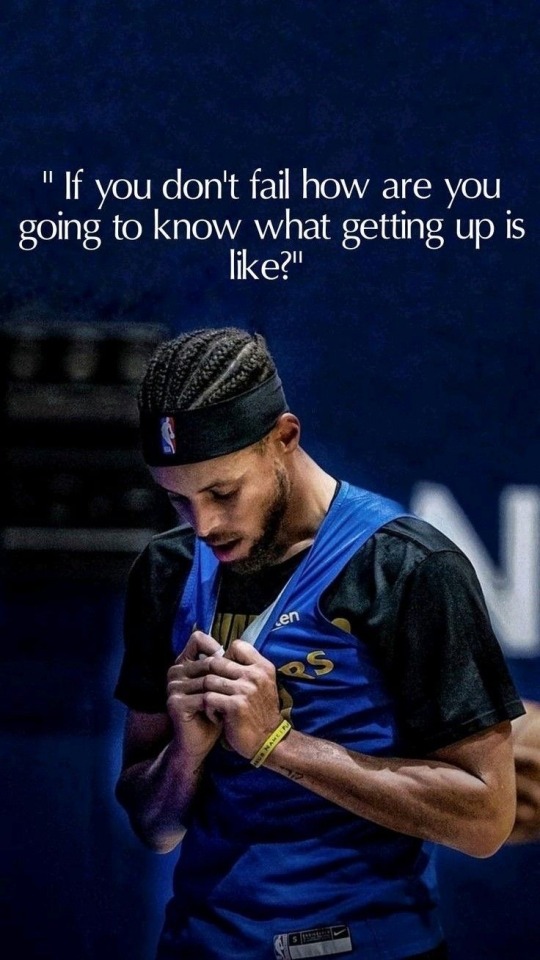
Steph Curry is one of the most iconic players in the history of basketball. Since his arrival in the NBA in 2009, Curry has developed a reputation as one of the greatest shooters of all time, with a skill set that has transformed the game of basketball. His remarkable performances on the court have earned him numerous accolades, including MVP awards, championships, and records that have cemented his place among the NBA’s greatest players.
The debate over whether or not Steph Curry is the Greatest of All Time (GOAT) in basketball continues to rage on. While some argue that his achievements fall short of other legendary players like Michael Jordan, LeBron James, or Kareem Abdul-Jabbar, others point to his shooting ability, impact on the game, and team accomplishments as evidence that he deserves the title.
3 notes
·
View notes
Text
Film icon Pam Grier has teamed with Village Roadshow Pictures to develop a project based on her bestselling 2010 memoir, “Foxy: My Life in Three Acts.”
Known as the queen of 1970s Blaxploitation classics like “Coffy” and “Foxy Brown,” plus Quentin Tarantino’s Oscar-nominated film “Jackie Brown,” Grier is enjoying her latest act thanks to movies like 2023’s “Cinnamon.” That film kicked off her relationship with Village Roadshow Pictures, which produced the title under the company’s Black Noir Cinema banner for Tubi.
“Foxy: My Life in Three Acts” details Grier’s legendary screen career; her relationships with Richard Pryor, Kareem Abdul-Jabbar and Freddie Prinze, among others; her experience as a Black female star in an era with rampant racism and sexism; and her battle with stage-four cervical cancer, diagnosed in 1988, when she was told she had 18 months to live.
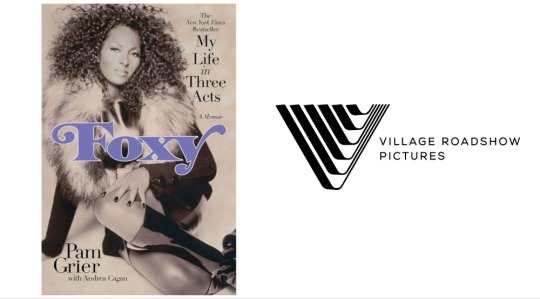
The production is in the early stages of development, so fans will have to wait and see if Grier’s story becomes a big screen biopic or a series. Jillian Apfelbaum, Tristen Tuckfield, and Nic Gordon will oversee the project for VRP, with Grier serving as executive producer.
Grier is an Emmy, Golden Globe and Screen Actors Guild award nominee whose resume also includes starring roles in Showtime’s “The L-Word,” “Linc’s,” plus a featured arc on NBC’s “This Is Us.” The Tubi original movie “Cinnamon,” which was directed by Bryian Keith Montgomery Jr. and also starred Emmy nominee Damon Wayans and Grammy nominee Hailey Kilgore, premiered at the 2023 Tribeca Film Festival. The crime thriller won two prizes at the American Black Film Festival and was nominated for two NAACP Image Awards.
Next, Grier stars in the second installment of the horror anthology series “Them: the Scare,” premiering April 25 on Prime Video. Grier takes on the role of Athena, described as a “meticulous, clever and prideful” woman with “mama bear qualities who has hidden secrets.”
She is represented by IAG, LINK Entertainment and attorney Leigh Brecheen.
3 notes
·
View notes
Text
Mookie Betts is the superstar baseball needs

Los Angeles, CA - (News4usOnlline) - It has been 78 years since Jackie Robinson debuted for the Brooklyn Dodgers, breaking the MLB color barrier, and it feels like the number of Black stars in baseball is headed in the wrong direction. Mookie Betts is one of the best players in the game and a shining example of what a superstar should look like. Still, after him, there are very few household-name African American players for the next generation to gravitate towards for inspiration. "In the NBA or NFL, it is balanced. Baseball is not as balanced, so why am I chasing baseball? I can name Mookie Betts, but I can not name enough to say I want to play baseball. There are not enough of us there. The kids need something to see. You have to see it to want it," said Barry Bonds during a recent All the Smoke podcast appearance.

Los Angeles, CA - Shortstop Mookie Betts and the Los Angeles Dodgers celebrated Jackie Robinson Day with a 6-2 win against the Colorado Rockies at Dodger Stadium on April 15, 2025. Photo credit: Dennis J. Freeman/News4uOnline "When I played baseball, you had me, Ken Griffey Jr., Eric Davis, Ozzie Smith, Willie McGee, Andre Dawson, and on and on and on. I could name a ton of inspiring Black athletes on the field to inspire other Black kids to want to play," said Bonds. Betts is carrying a lot of weight on his shoulders, but he is strong enough to handle it. Playing for the same franchise as the legendary Robinson, Betts is also starting to cement himself as an all-time great and has done it with class every step of the way. He has an MVP Award, a batting title, and three World Series rings. On any given night, he can surpass even the greatness of Shohei Ohtani and be the best player on the best team in the world. The Dodgers' popularity has reached a new height it has never seen before, and Betts is at the center of it. He is one of the most beloved athletes in Los Angeles, regardless of sport. Only time will tell, but he could be inspiring the next great generation of Black baseball players as we speak, repopulating the number of stars in the league. "I know it is really cliche, but if you can dream it, you can do it. It all starts with a dream. We all dreamed of being in this locker room, and we just did the work it took to get here. I would say whatever you dream, you can achieve. Sometimes you will go through some ups and some downs, but you have to stay the course," said Betts. Betts is a super athlete who excels at just about anything he picks up. What makes him unique is that his height limits his potential as an NBA prospect, and his weight is not ideal for taking on the beating of an NFL player. Trying to make it as a professional athlete in the United States is tough, and any restraint could discourage young athletes. An entire demographic of kids needs a Mookie Betts to look up to so that someone can show them baseball is for everyone, regardless of race or stature.

Los Angeles Dodgers shortstop Mookie Betts fields a grounder against the Chicago Cubs during a Major League Baseball game played April 13, 2025, at Dodger Stadium in Los Angeles, California. Photo credit: Melinda Meijer/News4usOnline Even though there are fewer Black stars than in the past, Betts' manager, Dave Roberts, has still seen progress and gives his shortstop a lot of credit. "There are more people of color than I have ever seen, and I think Mookie is a big reason for that. Today, Kareem (Abdul-Jabbar) said that Jackie (Robinson) helped him do things the right way. Mookie understands this role. He doesn't always feel comfortable speaking out, but living a certain way, treating people a certain way, playing a certain way, I think that is something he understands is a responsibility for him," said Roberts. https://twitter.com/Dodgers/status/1912387026814701857 Betts clarified postgame after the Dodgers beat the Rockies on Jackie Robinson Day that he does not like getting into all of the race aspects of the game, but acknowledges the history and knows how important it is to continue to pass on the legacy that Robinson created. "It is always special getting to put on that (#42) jersey. Fortunately, I have been able to do it for a while now, and hopefully, I can do it for a long time more, but just understanding what it means is the most important thing," said Betts. If Robinson could hand-pick a modern-day player who represents the values that he stood for, Betts would be a fantastic first choice. He is the type of athlete who leads by example, letting his play and actions do most of the talking. The game is flowing with talent from all over the globe, and Black stars have diminished, but luckily, Mookie Betts is here as an example for young ball players who aspire to be like him. Featured Image: Los Angeles, CA - Los Angeles Dodgers shortstop Mookie Betts in defensive action against the Colorado Rockies on April 15, 2025. Photo credit: Dennis J. Freeman/News4usOnline Read the full article
0 notes
Text




April 16, 2025 Happy Birthday to the Captain, the one and only Kareem Abdul - Jabbar. From dominating the NCAA to his legendary NBA career, he embodied excellence and left an unmatched legacy.
A true icon of athleticism and intellectualism. We honor you.
#kareemabduljabbar #betbirthday #thecaptain #nba
0 notes
Text
Los Angeles Lakers adalah tim basket profesional yang berbasis di Los Angeles, California, dan salah satu tim paling sukses dalam sejarah NBA. Didirikan pada tahun 1947, Lakers telah memenangkan 17 gelar juara NBA, yang menyamai rekor Boston Celtics. Tim ini dikenal dengan pemain legendaris seperti Magic Johnson, Kareem Abdul-Jabbar, Shaquille O'Neal, dan Kobe Bryant, serta saat ini diperkuat oleh bintang seperti LeBron James dan Anthony Davis. Lakers juga terkenal dengan gaya permainan yang menghibur dan rivalitas sengit dengan tim seperti Boston Celtics. Dengan sejarah prestasi yang kaya dan basis penggemar global, Lakers tetap menjadi salah satu tim paling berpengaruh di dunia basket.
0 notes
Text

🏀✨ LeBron James surpasses Kareem Abdul-Jabbar, marking another historic moment in his legendary career! 🚀 As the Lakers find their groove, it’s clear: greatness never rests. #LeBron #Lakers #NBAHistory #BasketballLegends #Kareem 🌟 Source: Dave McMenamin https://ift.tt/T4q9B80
0 notes
Text

It’s Bruce Lee Day/Bruce Lee’s 84th birthday! The birthday of one of the greatest martial artists and actors of all time known for his amazing work in his legendary martial arts films, his own made martial arts, and his philosophy. His work was nothing short of influential, incredible and just inspiring for many people. Not only did it bridged the gap between the west and the east in terms of culture and content but also in pop culture as well! With many people influenced by him (Chuck Norris, Jackie Chan, Arnold Schwarzenegger, Eddie Murphy, Olivia Munn, Stan Lee, Akira Toriyama, Masashi Kishimoto, Sharon Tate, Kareem Abdul Jabbar and etc!) as well as anime and manga (Cowboy Bebop, Dragon Ball, Fist of the North Star etc) and video games (Street Fighter, Kung Fu Master, Beat em Ups and Fighting games in general etc)!
Bruce Lee, Happy 84th Heavenly Birthday you legendary man, and while you unfortunately passed away so young and unexpectedly at the age of 32 on July 20th 1973, your impact, legacy and beautiful work will live on forever my friend…
#bruce lee#bruce Lee fanart#bruce Lee art#bruce lee 84#bruce lee 84th birthday#bruce lee tribute#thank you bruce lee#bruce lee day#bruce lee day 2024
1 note
·
View note
Text
The 1984 NBA Championship Playoffs: A Legendary Showdown
The 1984 NBA Championship Playoffs stand out as one of the most iconic and memorable moments in basketball history. Not only did the playoffs feature legendary performances by some of the game’s greatest players, but they also reignited the fierce rivalry between two of the league’s most storied franchises: the Boston Celtics and the Los Angeles Lakers. The culmination of the 1983–1984 NBA season in an epic seven-game series between the Celtics and the Lakers added to the rich history of both franchises and laid the groundwork for the golden age of basketball in the 1980s.
The Road to the Finals
Boston Celtics: The Eastern Conference Powerhouse
The Boston Celtics entered the 1984 playoffs with the league’s best record, finishing the regular season at 62–20. Led by Larry Bird, who won the 1984 NBA MVP, the Celtics were dominant throughout the season. With a core that included Bird, Robert Parish, Kevin McHale, and veteran point guard Dennis Johnson, the Celtics boasted one of the most balanced and formidable rosters in the league.
Boston’s playoff journey began in the Eastern Conference, where they faced the Washington Bullets in the first round. The Celtics made quick work of the Bullets, sweeping them 3–0. In the Eastern Conference Semifinals, they faced a tougher challenge in the form of the New York Knicks, but ultimately prevailed in seven games, winning the series 4–3. The Celtics then advanced to the Eastern Conference Finals to meet the Milwaukee Bucks, defeating them 4–1 to book their place in the Finals.
Los Angeles Lakers: Showtime Dominance
On the other side of the country, the Los Angeles Lakers had solidified themselves as the premier team in the Western Conference. Led by the dazzling playmaking of Magic Johnson and the unstoppable scoring of Kareem Abdul-Jabbar, the Lakers played with the fast-paced, high-flying style known as “Showtime.” Under head coach Pat Riley, the Lakers finished the regular season with a 54–28 record, earning the top seed in the West.
The Lakers began their playoff run by sweeping the Kansas City Kings in the first round. In the Western Conference Semifinals, they dismantled the Dallas Mavericks, defeating them 4–1. In the Western Conference Finals, the Lakers met the Phoenix Suns and dispatched them in six games, setting up the highly anticipated Finals matchup against the Celtics.
The Rivalry: Celtics vs. Lakers
The 1984 NBA Finals was more than just a battle for the championship — it was a renewal of the league’s most storied rivalry. The Celtics and Lakers had already met seven times in the Finals, with Boston winning each previous encounter. The matchup in 1984, however, had an added layer of intensity, with two of the league’s brightest stars — Larry Bird and Magic Johnson — facing off on basketball’s biggest stage.
The rivalry between Bird and Magic had been brewing since their college days, when they famously squared off in the 1979 NCAA Championship game, which Magic’s Michigan State won. The 1984 Finals offered Bird a chance at revenge and further cemented the personal and professional rivalry that would define the NBA for years to come.
The 1984 NBA Finals: A Seven-Game Thriller
The 1984 NBA Finals lived up to every expectation and then some. It was a series filled with drama, clutch performances, and intense physicality. Each game was a battle, and the series ultimately went the full seven games, with both teams leaving everything on the floor.
Game 1: Lakers Strike First
In Game 1, the Lakers took control early, with Magic orchestrating the offense and Kareem dominating the post. The Lakers won 115–109, stealing home-court advantage from the Celtics.
Game 2: The Heat Turns Up
Game 2 is often remembered for the infamous Kevin McHale clothesline on Lakers forward Kurt Rambis. The hard foul ignited tensions between the two teams and led to a more physical style of play throughout the series. The Celtics, energized by the altercation, fought back to win 124–121 in overtime, tying the series 1–1.
Game 3: Lakers Blowout in LA
Back in Los Angeles for Game 3, the Lakers responded with a commanding 137–104 victory, taking a 2–1 series lead. The Celtics were outplayed in every aspect, and it seemed like the Lakers might run away with the series.
Game 4: Magic’s Blunder
Game 4 is one of the most memorable in Finals history. In a tightly contested game, the Celtics capitalized on a rare mistake by Magic Johnson. With the game tied in regulation, Magic dribbled out the clock, failing to get off a shot in time. In overtime, the Celtics pulled off a 129–125 victory to even the series 2–2, with Larry Bird leading the way.
Game 5: The Heat of the Garden
Game 5 is forever known as the “Heat Game.” Played at the Boston Garden without air conditioning, temperatures soared to over 90 degrees on the court. Despite the brutal conditions, the Celtics outlasted the Lakers, winning 121–103 behind a gritty performance from Bird, who scored 34 points and grabbed 17 rebounds. Boston now led the series 3–2.
Game 6: Lakers Force Game 7
Facing elimination, the Lakers responded in Game 6 back in Los Angeles. Kareem was unstoppable, scoring 30 points and leading the Lakers to a 119–108 win, sending the series to a decisive Game 7.
Game 7: Celtics Triumph
In one of the most highly anticipated games in NBA history, the Celtics and Lakers squared off in Game 7 at the Boston Garden. The Celtics jumped out to an early lead, and despite several Lakers comeback attempts, Boston held firm. Larry Bird was named Finals MVP after leading the Celtics to a 111–102 victory. With the win, the Celtics captured their 15th NBA championship and reignited the franchise’s dominance.
The Legacy of the 1984 Finals
The 1984 NBA Finals had a profound impact on the NBA and the sport of basketball. It cemented the rivalry between the Celtics and Lakers, which would continue throughout the decade. Larry Bird and Magic Johnson, already stars, became transcendent figures in sports, elevating the NBA’s popularity to new heights. The Celtics’ victory added another chapter to their historic legacy, while the Lakers would come back to win championships in the years that followed.
This seven-game series became the gold standard for NBA Finals, showcasing both the physicality and finesse of 1980s basketball. For fans and historians of the game, the 1984 NBA Championship Playoffs remain a testament to the greatness of both the Celtics and the Lakers, and a defining moment in the history of the NBA.
The 1984 NBA Championship Playoffs represented everything fans love about the sport of basketball — epic rivalries, unforgettable moments, and larger-than-life players. With the Boston Celtics emerging victorious in a dramatic seven-game series against the Los Angeles Lakers, the 1984 Finals etched itself into NBA lore. It was a series that set the stage for the dominance of both franchises throughout the 1980s, and a pivotal chapter in the history of basketball that will be remembered for generations.
1 note
·
View note
Text

The 1985 NBA Finals between the Los Angeles Lakers and the Boston Celtics is etched in the annals of basketball history as one of the most fiercely contested series ever. Among the many memorable moments of this series, one particular incident stands out: the intense mid-air collision between Kurt Rambis of the Lakers and Danny Ainge of the Celtics. This moment encapsulates the fierce rivalry, competitive spirit, and raw physicality that defined this era of NBA basketball.
The 1985 NBA Finals were a rematch of the previous year's championship series, where the Celtics had defeated the Lakers in a grueling seven-game series. The Lakers were determined to avenge their loss and reclaim their position as the NBA champions. The series was marked by intense physical play, strategic brilliance, and high drama, reflecting the storied rivalry between these two legendary franchises.
The Lakers, led by Magic Johnson and Kareem Abdul-Jabbar, were a team known for their fast-paced, high-scoring style of play, often referred to as "Showtime." In contrast, the Celtics, anchored by Larry Bird, Kevin McHale, and Robert Parish, were known for their toughness, defensive prowess, and clutch performances. This clash of styles added another layer of excitement to the series.
The incident occurred during Game 4 of the series, played on June 9, 1985, at The Forum in Inglewood, California. The Lakers were trailing 2-1 in the series and were desperate to even the score. The game was fiercely contested, with both teams displaying relentless aggression and determination.
Midway through the third quarter, with the Lakers leading 76-70, Magic Johnson launched a fast break. As he drove towards the basket, he spotted Kurt Rambis streaking down the court on the left side. Johnson passed the ball to Rambis, who was in full stride, heading for what seemed like a clear layup.
However, Danny Ainge, known for his tenacity and never-back-down attitude, had other plans. As Rambis elevated towards the
0 notes
Text
"Hi, my name is Janet Chinoona and I'm a big fan of basketball. Today, I'm going to tell you about my favorite basketball team."
The history of the Lakers:
- The Lakers had a rough start in Los Angeles, but things turned around when they drafted Magic Johnson in 1979.
- They traded for Kareem Abdul-Jabbar and formed the "Showtime" Lakers.
- They had a legendary rivalry with the Boston Celtics, led by Larry Bird.
- In the early 2000s, they drafted Kobe Bryant and signed Shaquille O'Neal, who helped them win three championships.
- The Lakers are one of the most iconic and successful teams in NBA history, with 16 championships overall.
1 note
·
View note
Link
The '10 or more NBA All-Star Games' quiz Last February, LeBron famously ... #usa #uk
0 notes
Text
The National Basketball Association (NBA) logo, featuring a player dribbling a basketball, has become an enduring symbol in professional sports. During my childhood, I often pondered the player's identity portrayed in the iconic image. Was it a real NBA player? And if so, who was that basketball player who became immortalized as the silhouette in the logo? As it turns out, the image depicted a real player, the legendary Jerry West, a revered figure in the world of basketball, and a member of the esteemed Basketball Hall of Fame. Let us delve into the story behind how Jerry West came to be known as "The Logo." Seeking a Fresh Image In 1969, NBA Commissioner J. Walter Kennedy sought to breathe new life into the league's brand. With the company expanding to encompass 14 teams, revitalization was ripe. However, two years prior, the NBA had started feeling the heat from a budding competitor—the American Basketball Association (ABA). To rejuvenate the NBA's image, Kennedy turned to Alan Siegel, a seasoned expert in branding professional sports leagues. A year earlier, Siegel had left his mark by designing the iconic logo for Major League Baseball (MLB). Siegel, a close friend of sportswriter Dick Schaap from the Sporting News, approached him with a request to peruse the magazine's vast photo collection in search of inspiration. During his exploration, Siegel's attention was captured by a particular image featuring the prominent player Jerry West skillfully dribbling the ball. The idea resonated deeply with him. In an interview, Siegel expressed his fascination with the image, stating, "I was drawn to it because of its pleasing verticality, the player's graceful lean while dribbling... it conveyed a sense of subtle motion." While Siegel had contemplated using photos of other basketball superstars such as Kareem Abdul-Jabbar, Wilt Chamberlain, and John Havlicek, he ultimately decided to go with the captivating photograph of West. Once Siegel decided, his team meticulously traced the image's outline and embedded it within the NBA shield, giving birth to the iconic logo we recognize today. Unveiling the Identity of the Logo While it is widely known among basketball enthusiasts and insiders that the logo does depict Jerry West, the NBA has never officially acknowledged him as the face behind their emblem. When Siegel presented the design, he neither explicitly stated that it was West in the image nor denied it during discussions. So, why was the league reluctant to acknowledge the West as representing their "new look"? One major factor lies in the league's objective at the time, establishing a standardized rather individualized identity for the NBA. Basketball is the epitome of a team sport, and during the 1960s, the concept of one-on-one or isolation-style play was largely foreign—the league aimed to promote the collective nature of the game rather than highlighting any specific individual. Jerry West: "I wish they would change it." Adding another layer to the story, it is intriguing that West was never officially informed about the logo until its release. Even then, he wasn't entirely sure if it was indeed him depicted in the picture. West and Siegel had limited interaction throughout the years, with only a few brief introductions. Siegel observed that West's attitude towards him was less than amicable. In April 2017, Jerry West made an appearance on The Jump, a famous NBA show on ESPN, where he expressed his perspective on the matter, surprising fans with his response: https://www.youtube.com/watch?v=JG_L9Uc9xJY "I don't know, I don't like to do anything to call attention to myself, and when people say that, it's just not who I am, period. If they would want to change it, I wish they would. In many ways, I wish they would." Alternative Options for the NBA Logo When asked if West had any suggestions for a replacement, he had one player in mind: Michael Jordan.
"He's been the greatest player I've ever seen. And I'm probably a harsh judge of talent, in the sense that I admire players that are really good defensive players and really good offensive players... And he made his teams win." Alan Siegel, the designer behind the logo, has been frequently asked about his opinion on updating and changing the NBA logo. His response has consistently been a resounding "NO." "It's a really elegant, powerful presentation of basketball. It's challenging from a graphic standpoint to create something as visually impactful in a static image like this. It needs to convey tension, movement, and grace. It's not easy. I don't believe they should change it. Having worked on numerous sports symbols, I can say it's a difficult task. You can't overcrowd the design with too many elements. It needs to be simple, powerful, and dynamic. The current logo possesses all these elements." FAQs This section will answer some common questions about the NBA logo and explain why it has remained unchanged for so long. Who was the NBA Logo before Jerry West?The NBA logo has always been associated with Jerry West. The designer, Alan Siegel, based the logo on a photograph of Jerry West dribbling the ball. Since its creation in 1969, the logo has featured Jerry West's silhouette.Was Michael Jordan ever the NBA Logo?No, Michael Jordan has never been the official NBA logo. Although Jordan is widely recognized and admired as one of the greatest basketball players ever, Jerry West's silhouette has always represented the NBA logo.Why is Kobe Bryant, not the NBA Logo?Following the tragic passing of Kobe Bryant, there was a movement among players and fans to change the NBA logo to honor him. However, the NBA has not made any official changes to the logo. The league's stance is that the logo is not meant to be associated with any specific player but represents the spirit of the game itself.Will the NBA ever change its logo?Currently, it is doubtful that the NBA will change its logo. The league has expressed contentment with the original logo for many years and considers it iconic. Changing the logo would require a significant rebranding effort and a departure from the longstanding symbol representing the league. Conclusion The story behind the NBA logo and the player it represents adds to the history and intrigue of the league's early years. While there have been discussions about updating the logo, it is hoped by many that it remains unchanged. The logo symbolizes the NBA's growth and success since its introduction in 1971. While the league has other priorities and concerns, it remains committed to honoring its past and celebrating the pioneers and the current stars who have contributed to the NBA's prominence. The image of Jerry West's silhouette on the league shield captures the essence of this vision, representing a blend of the past and present in the ever-evolving game of basketball.
0 notes